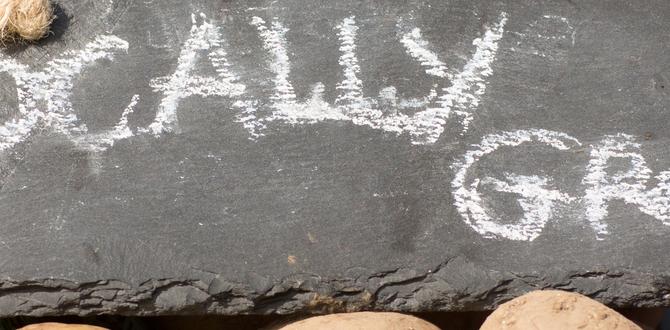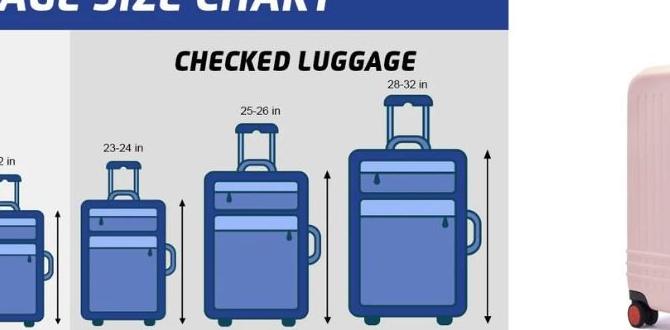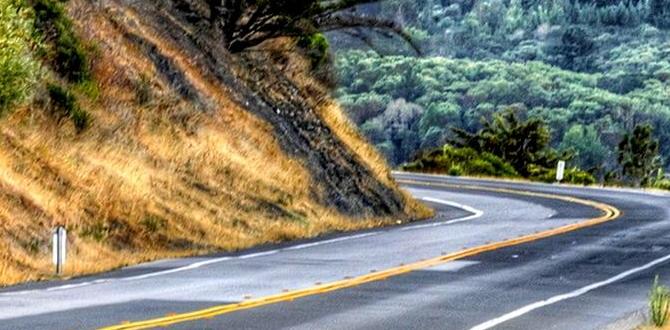Baja California safety is about being aware of common scams and making smart choices. By understanding potential pitfalls and preparing ahead, you can enjoy a worry-free Mexican adventure. Focus on trusted rentals, official services, and staying informed to avoid problems and have a fantastic trip.
Heading to beautiful Baja California? Get ready for stunning beaches, delicious food, and vibrant culture! Most visitors have amazing trips. However, like any popular destination, a little knowledge goes a long way to ensure your adventure is smooth sailing. Some travelers encounter frustrating situations, like unexpected charges or misleading offers. But don’t worry! This guide is packed with straightforward tips to help you steer clear of common scams and mistakes. We’ll cover everything you need to know to travel with confidence, so you can focus on soaking up the sun and making incredible memories.
Understanding Baja California Safety: Your Essential Guide
Baja California, a long, beautiful peninsula in Mexico, offers a fantastic getaway for many. From the lively towns of Los Cabos to the more laid-back vibes of Todos Santos and La Paz, there’s something for everyone. Travel here is generally safe and enjoyable, but knowing about potential scams and common traveler errors can make your experience even better. Think of it like packing the right gear for a hike – being prepared means you can focus on the amazing scenery and not worry about tripping over a hidden root.
At Journey Essentials, we believe travel should be about comfort, ease, and confidence. That’s why we’ve gathered practical advice to help you navigate your Baja adventure like a pro. We’ll break down common issues and offer simple solutions, so you can relax and enjoy everything this stunning region has to offer. Let’s get you ready for a safe and unforgettable trip!
Common Baja California Scams to Watch Out For
Being aware is your best defense against travel scams. Scammers often target tourists because they may be unfamiliar with local prices or customs. Here are a few common ones to keep an eye on:
The “Fake” Taxi Meter Scam
What it is: You hop into a taxi, and the driver either claims the meter is broken or never turns it on, charging you an inflated flat rate at the end of your trip. In some cases, they might even have a faulty meter that dramatically overcharges you.
How to avoid it:
- Always confirm the meter: Before you start your journey, ask, “¿El taxímetro funciona?” (Does the meter work?). If the answer is no, or they try to give you a price before you leave, find another taxi.
- Agree on a price in advance (if no meter): If a meter isn’t an option (which is rare for reputable services), agree on a fair price before getting in. Have an idea of typical fares beforehand.
- Use reputable services: Many hotels can call official taxis or arrange transport. Ride-sharing apps like Uber or Didi are available in some larger cities and often provide a fixed, upfront price, which is a great alternative.
- Look for official taxi stands: Taxis waiting at official stands or airports are often more regulated and reliable.
The “Overpriced Souvenir” or “Art Gallery” Trap
What it is: You’re enjoying a stroll and a friendly local invites you to a nearby shop or gallery, promising unique items or “great deals.” Once inside, the prices are astronomically high, and you might feel pressured to buy something. Sometimes, they’ll offer a “special discount” that’s still far above market value.
How to avoid it:
- Be wary of overly aggressive invitations: If someone is too pushy about getting you into their shop, it’s a red flag.
- Shop around: Get a feel for typical souvenir prices in different areas before making a purchase.
- Know your budget: Decide ahead of time how much you’re willing to spend on souvenirs.
- Politely decline: A simple “No, gracias” (No, thank you) is usually sufficient if you’re not interested.
The “Broken Rental Equipment” Scam
What it is: When renting items like jet skis, ATVs, or even snorkeling gear, you might be charged for pre-existing damage that you didn’t cause. The rental company may claim you scratched the vehicle or broke a piece of equipment, demanding a hefty payment.
How to avoid it:
- Inspect thoroughly: Before signing anything or paying, meticulously inspect the equipment for any dents, scratches, or damage. Take pictures or videos with your phone from multiple angles.
- Document everything: Note any existing damage on the rental agreement form. If the staff is reluctant, politely insist.
- Read the contract carefully: Understand the terms and conditions regarding damage and insurance.
- Choose reputable providers: Opt for rental companies with good reviews and a solid reputation.
The “ATM Skimming” Warning
What it is: While not exclusive to Baja, ATMs can be targets for “skimmers” – devices attached to card readers to steal your debit card information. This can lead to unauthorized withdrawals from your account.
How to avoid it:
- Use ATMs inside banks: These are generally more secure than standalone ATMs.
- Inspect the ATM: Wiggle the card slot and keypad. If anything looks loose, tampered with, or different from usual, use a different ATM.
- Cover the keypad: Always shield the keypad with your other hand when entering your PIN.
- Monitor your bank statements: Keep an eye on your accounts for any suspicious activity.
- Inform your bank: Let your bank know you’ll be traveling to Mexico so they can monitor your card and you can be notified immediately of international transactions.
The “Free Beer” or “Inexpensive Tour” Hook
What it is: Someone approaches you offering incredibly cheap tours or “free beers” at a bar, often leading you to a specific establishment. Once there, the prices are suddenly much higher, or you might find yourself pressured to buy expensive drinks or services to “pay back” the initial offer.
How to avoid it:
- If it sounds too good to be true, it probably is: Be skeptical of overly generous offers for entertainment or food.
- Verify prices independently: Research tour prices online or ask your hotel for recommendations.
- Stick to well-known establishments: Unless you’re feeling adventurous and aware of the risks, stick to restaurants and bars that come highly recommended or are located in busy, tourist-friendly areas.
Common Mistakes Travelers Make in Baja California (And How to Avoid Them)
Beyond outright scams, some common mistakes can lead to inconvenience or missed opportunities. These are often simple oversights that can be easily prevented with a little planning.
Mistake 1: Not Exchanging Currency or Using Pesos
Why it’s a problem: While U.S. dollars are widely accepted in tourist areas, you often get a worse exchange rate than if you paid in Mexican Pesos. You might also be given change in pesos at a poor rate.
How to avoid it:
- Get Pesos: Exchange some money at a reputable exchange bureau in Mexico or withdraw pesos from an ATM upon arrival (see ATM safety tips above).
- Use Pesos for smaller purchases: For local markets, smaller restaurants, and tips, pesos are ideal.
- Understand exchange rates: Know the approximate current exchange rate so you can gauge if prices in dollars seem fair.
Mistake 2: Driving Without Insurance Awareness
Why it’s a problem: U.S. car insurance policies typically do not cover vehicles driven in Mexico. If you plan to drive, not having proper Mexican auto insurance can lead to serious financial trouble if you’re in an accident.
How to avoid it:
- Purchase Mexican Auto Insurance: This is crucial. You can buy it online before you leave or at border crossings. Make sure it offers sufficient liability coverage. Reputable providers include Baja Norte Rates or other trusted companies.
- Understand your rental agreement: If you’re renting a car, ensure you understand what type of insurance is included and if it’s sufficient for driving in Mexico.
Mistake 3: Underestimating Travel Distances and Time
Why it’s a problem: Baja California is a surprisingly long peninsula. What looks like a short drive on a map can take many hours due to winding roads, speed limits, and potential traffic or unpaved sections.
How to avoid it:
- Use mapping tools realistically: Google Maps and similar apps are helpful, but add significant buffer time (at least 25-50%) for your estimates, especially for longer drives.
- Plan your itinerary carefully: Don’t try to cram too much into each day. Factor in stops for gas, food, and simply enjoying the scenery.
- Stay overnight: If you have a very long drive, consider breaking it up with an overnight stay.
Mistake 4: Not Packing for the Climate Variety
Why it’s a problem: Baja’s climate can vary significantly from north to south, and from the coastal areas to inland mountains. You might experience hot days and cooler evenings, or even surprising temperature drops in higher elevations.
How to avoid it:
- Pack layers: Bring lightweight clothing for warm days, but also include a sweater or light jacket for cooler evenings or air-conditioned spaces.
- Sun protection is key: Always pack sunscreen (SPF 30 or higher), a wide-brimmed hat, sunglasses, and consider a light, long-sleeved shirt for sun protection. The sun’s rays are intense!
- Check local forecasts: Before you pack, check the weather forecast for the specific regions you’ll be visiting.
Mistake 5: Ignoring Local Customs and Etiquette
Why it’s a problem: While many locals are accustomed to tourists speaking English, showing an effort to speak Spanish and respect local customs enhances your experience and fosters goodwill.
How to avoid it:
- Learn basic Spanish phrases: “Hola” (Hello), “Adiós” (Goodbye), “Por favor” (Please), “Gracias” (Thank you), “Perdón” (Excuse me), and “Cuánto cuesta?” (How much does it cost?) go a long way.
- Dress respectfully when appropriate: While beachwear is fine at the beach, dress a bit more modestly when visiting churches or more traditional towns.
- Be patient and polite: Things can move at a different pace. A smile and a polite demeanor are universally appreciated.
Mistake 6: Not Staying Connected (or Feeling Isolated)
Why it’s a problem: Not having a reliable way to communicate can be stressful, especially if there’s an emergency, you need to change plans, or simply want to share your amazing photos with friends and family. Relying solely on free Wi-Fi can be unreliable.
How to avoid it:
- Check your carrier plan: See if your current mobile carrier offers an international plan for Mexico.
- Purchase a local SIM card: You can buy a prepaid SIM card from providers like Telcel or AT&T Mexico upon arrival, which is often very affordable for data and calls. This is generally the most cost-effective option.
- Consider an eSIM: If your phone supports it, purchasing an eSIM plan before you leave can be very convenient.
- Download offline maps: Even if you have data, downloading offline maps for areas you’ll be visiting is a smart backup.
Essential Baja California Safety Tips
Beyond avoiding scams and mistakes, here are some general safety tips to ensure a smooth and enjoyable trip:
1. Stay Aware of Your Surroundings
This is good advice anywhere you travel. Be mindful of your belongings, especially in crowded markets or tourist spots. Avoid displaying expensive jewelry or large amounts of cash.
2. Trust Your Gut Instincts
If a situation feels uncomfortable or a person seems untrustworthy, remove yourself from it. It’s better to be overly cautious than to put yourself at risk.
3. Be Cautious with Alcohol Consumption
While enjoying a drink is part of the vacation experience, excessive alcohol consumption can impair your judgment and make you a more vulnerable target. Drink responsibly.
4. Secure Your Valuables
Use your hotel safe for passports, extra cash, and other important documents. When you’re out, keep essentials like your phone, wallet, and hotel key in secure, zipped pockets or a cross-body bag.
5. Respect Driving Laws and Conditions
If you’re driving, adhere to speed limits, be aware of road conditions (which can vary greatly), and avoid driving at night if possible, especially on less traveled roads. Livestock and pedestrians can unexpectedly enter roadways.
6. Stay Hydrated and Protected from the Sun
Baja can be very hot. Drink plenty of bottled water to stay hydrated and use sun protection consistently. Dehydration and sunburn can quickly ruin your trip.
7. Know Emergency Numbers
The primary emergency number in Mexico is 911. It’s also a good idea to have the contact information for your country’s embassy or consulate in Mexico readily available.
The U.S. Department of State provides travel advisories and information for Mexico, which can be a valuable resource for understanding current safety situations. You can find country-specific information on their website: U.S. Department of State – Mexico Travel Advisory.
Packing Essentials for Comfort and Safety
As Michael C. Herrera of Journey Essentials, I highly recommend packing smart to ensure your comfort and peace of mind. Sometimes, the right gear can prevent a lot of stress.
For comfort and convenience on any trip, especially those involving extended travel or needing some extra security, consider:
- Comfortable, Versatile Clothing: Layers are key! Think breathable fabrics for the heat and something warmer for cooler evenings.
- Sturdy, Comfortable Walking Shoes: You’ll be doing a lot of exploring, so happy feet are a must.
- Sun Protection: High SPF sunscreen, a wide-brimmed hat, and sunglasses are non-negotiable.
- Reusable Water Bottle: Stay hydrated and reduce plastic waste.
- Portable Power Bank: Keep your devices charged, especially if you’re relying on your phone for navigation or communication.
- First-Aid Kit: A small kit with essentials like bandages, antiseptic wipes, pain relievers, and any personal medications is always wise. For parents traveling with children, ensure you have child-specific medications and supplies.
- Travel-Friendly Personal Care Items: If you or a family member requires them, having discreet and reliable options like adult or child diapers can significantly reduce travel anxiety and ensure comfort, whether on a long flight or a day of sightseeing. Brands like Always Discreet or Tena offer very absorbent and leak-proof options that are undetectable under clothing.
I often find that having a few extra packs of personal care essentials, like child diapers or protective underwear for adults who might need them, can be a genuine lifesaver for maintaining dignity and comfort during trips. No one wants to worry about leaks or discomfort when they should be enjoying the experience!
Example Comparison: Rental Car Insurance Options
When renting a car, understanding insurance can be confusing. Here’s a simple breakdown of common options, particularly relevant for driving in Mexico where U.S. insurance generally doesn’t apply.
| Insurance Type | What it Covers | Considerations for Mexico |
|---|---|---|
| Third-Party Liability (TPL) | Covers damage or injury to others if you’re at fault. | Mandatory in Mexico. Your U.S. policy likely won’t cover this. Must be purchased separately. |
| Collision Damage Waiver (CDW) / Loss Damage Waiver (LDW) | Covers damage to the rental car itself (theft or collision). | Often offered by rental agencies. Does NOT cover your liability to others. |
| Comprehensive Coverage | Covers non-collision damage like fire, vandalism, theft, or natural events. | Can be part of a full package. |







